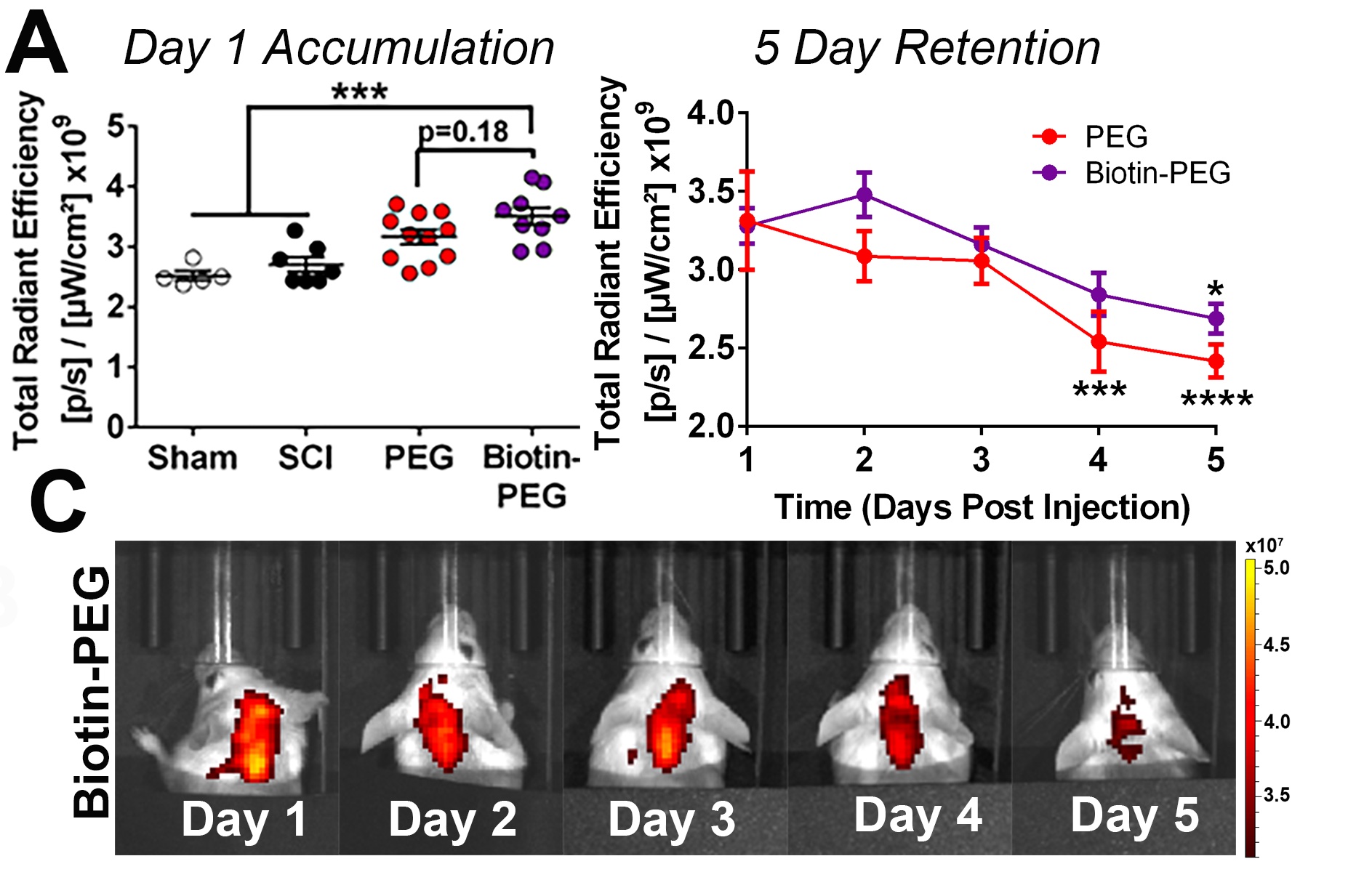Targeted drug delivery approaches utilizing nanocarriers have the potential to improve therapeutic drug interventions for patients on a case-by-case basis. Improved localization of a nanocarriers containing therapeutic drug to the tissue or organ site of interest can result in increased therapeutic efficacy and limit the need for repeat drug dosing. Most targeting strategies utilize a protein found within a particular tissue or organ of interest, but these proteins can change expression over time. Changes in the protein expression pattern can impair drug targeting efficiency that limits recovery and results in greater drug side effects. The BiomatErial Accumulating Carriers for On-demand Nanotherapy, or BEACON, system eliminates the need to target a cell or tissue receptor by targeting an implantable biomaterial with location-controllable nanocarrier accumulation and sustained presentation over time. The targeting paradigm presented by BEACON is widely applicable throughout tissue engineering and regenerative medicine without the need to retool for each new application or injury type. Validation of the BEACON system has been demonstrated using a rodent model of spinal cord injury. The spinal cord injury model was selected as there is poor vascular permeability that limits drug localization, yet there exists a great need for improved drug localization at specific time points post-injury in this model. Using this model, we have demonstrated nanocarriers injected at 5 days post implantation lead to strong accumulation 1 day after injection (Fig A) and increased retention for 5 days after injection (Fig B), as assessed through whole animal imaging (Fig C). On-going studies are looking at multiple doses over the injury time course with the eventual goal of curing paralysis after spinal cord injury.
Frost Institute of Chemical and Molecular Sciences Junior Faculty Award awarded to C.D.
S.D. acknowledges financial support from the NCI funded Sylvester Comprehensive Cancer Center support grant 1P30CA240139.
Andrew Ciciriello, Bapurao Surnar, Giovanni Medy, Xiaoyu Su, Shanta Dhar, Courtney Dumont (2022)
https://pubmed.ncbi.nlm.nih.gov/36087868/




